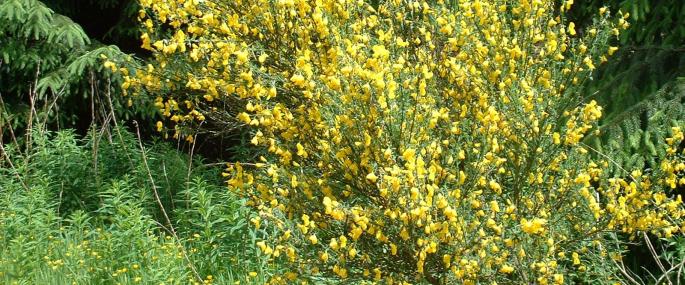Broom is a large, deciduous shrub, similar in appearance to Gorse, but without the spines. This member of the pea family is common on heaths, in open woodlands and along hedgerows and can be found at the coast. Its bright yellow flowers appear in spring, from April to June, and smell of vanilla. It is quite likely that Broom got its name from the fact that its long, whip-like stems were cut and tied together to make brushes. Although a number of similar species were also used in this way, Broom created the best brooms!
Broom is an important shrub in the wild, providing shelter and food for wildlife, but it can also be a useful plant in your garden too - the nectar-filled flowers attract many insects which, in turn, attract birds that prey on them. Try planting a few shrubs in your garden and see who comes to visit... To find out more about wildlife-friendly gardening, visit our Wild About Gardens website: a joint initiative with the RHS, there's plenty of facts and tips to get you started.
